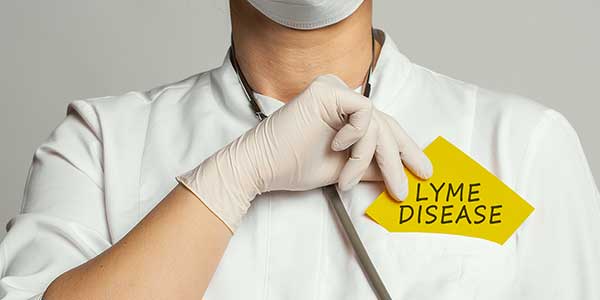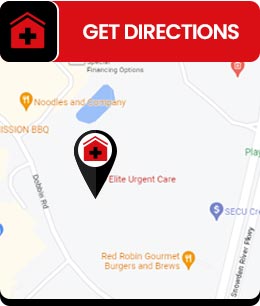Lyme Disease Treatment Clinic in Columbia MD
Borrelia burgdorferi and, in rare cases, Borrelia mayonii cause Lyme disease. It is spread to humans through the biting of infected black-legged ticks. Lyme disease develops a rash with a bull’s-eye pattern as well as flu-like symptoms. Joint discomfort and limb weakness are also possible. With proper antibiotic treatment, most Lyme disease patients fully recover. Pain drugs may provide symptomatic alleviation for those who suffer syndromes after their infection has been treated. Visit Dr. Nasser Nasseri, MD at Elite Urgent Care for Lyme disease treatment. For more information, contact us or request an appointment online. We are conveniently located at 6100 Dobbin Rd, Suite A Columbia, MD 21045.


Table of Contents:
What is Lyme Disease:
Symptoms of Lyme disease:
Can Lyme disease be prevented?
What can I do if I find a tick on my body?
As the weather gets warmer, we go outside more, do more hiking and walking in woods and grass, and wear shorts and skirts more often, there would be more chance of deer tick bite and having bull’s eye rash, like the picture above.
Lyme disease is an illness that presents with a variety of symptoms including feeling like you have the flu, a skin rash, or fever, as well as nerve, joint, or heart problems. People can get Lyme disease after being bitten by a tiny insect called a deer tick. When a deer tick bites you, it can pass the germ that causes Lyme disease to your body. We should know that a tick can infect you only if it stays attached for at least 36 hours.
The ticks that carry Lyme disease are very small about the size of poppy seed, and mostly they feed on deer and mice. The ticks cannot fly or jump, but usually, they are in tall grass and shrubs and can attach to people who walk on grass or pass by shrubs by attaching to body.
Symptoms can start days or weeks after a tick bite. They include a rash at the site of the bite during a few weeks after the bite. The rash is called Bull’s eye rash which is a red circular rash that is pale on the center. Fever, fatigue, body aches, HA, and heart problems could be other clinical presentations.
If the patient is not diagnosed and treated, they may present with other symptoms months or years later called late Lyme disease.
Should I see my health care provider? Yes. If you do have symptoms of Lyme, you should be evaluated by your health care provider. Some people may remember being bitten by ticks or having skin rash a few weeks ago.
Is there a diagnostic blood test for Lyme disease? Yes. Blood tests can show if you are infected with Lyme disease, but we should be aware that it takes time for the blood tests to turn positive. So, you may have negative tests if you get them right after being bitten, or when you have the early rash that goes with Lyme disease. Thus, if you have a recent tick bite or a skin rash, you do not need a blood test for Lyme disease right away. If you have had symptoms of Lyme disease for more than a month, the tests will be a good diagnostic option. Your healthcare provider will decide about ordering blood tests after asking questions, about your symptoms and duration of symptoms, physical findings, and the area in which you are living.
Is there a specific treatment for Lyme disease? Lyme disease is usually treated with antibiotics which help your symptoms go away faster. Usually, symptoms improve fast, but sometimes it may last for months.
Yes. The best way to prevent Lyme disease is to avoid getting bitten by a tick. But if you were already bitten and have a tick more than 36 hours attached to your body, your doctor might give you an antibiotic for prevention. In some situations, this can reduce your chances of getting Lyme disease.
To try to avoid getting bitten by a tick, you should:
• Wear long-sleeved shirts and long pants
• Wear bug repellents that protect you against ticks.
• Wear light-colored clothes that you can see any ticks on your clothes
• Check your clothes after being outdoors for ticks, especially groins, waist, armpits, and back of knees.
• Put the clothes on for about 5 minutes on dryer.
• Shower within 2 hours after coming from hiking and being outdoors, if you think you are living in an area with a high rate of Lyme like our state.
• If you live in a place that has deer or mice nearby, make sure to keep those animals away because deer and mice carry ticks.
If you find a tick on your body, use tweezers to grab it, and make sure to pull it out slowly and gently, otherwise, some parts of the tick will remain on your skin. After that, wash the area with soap and water. You do not need to keep the tick. But knowing what it looked like, the size and color of a tick, and the amount of time it has been attached to your skin will help your physician decide about your treatment.
You should get help from your doctor or nurse if you have a tick and you cannot get it off. You should also call your healthcare provider if you think you have had a tick attached for at least 36 hours (a day and a half). They can decide if you need to take a dose of an antibiotic to help prevent Lyme disease. Healthcare providers may recommend antibiotics to prevent Lyme disease in some circumstances including your age, the area you live, what kind of tick bit you have had, and how long it was attached to your skin. We are conveniently located at 6100 Dobbin Rd, Suite A Columbia, MD 21045. For more information, please contact us or request an appointment online. We serve patients from Columbia MD, Elkridge MD, Ellicott City MD, Laurel MD, Clarksville MD, Fulton MD, Jessup MD, and surrounding areas.








